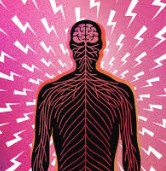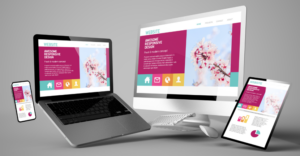
 Hypnotherapy guides eager clients into deep meditative relaxation, where the subconscious becomes open and receptive to positive suggestions. The intricate process through which this affects the subconscious mind and helps achieve specific goals involves several fascinating mechanisms:
Hypnotherapy guides eager clients into deep meditative relaxation, where the subconscious becomes open and receptive to positive suggestions. The intricate process through which this affects the subconscious mind and helps achieve specific goals involves several fascinating mechanisms:
- Altered Brainwave States
When someone is under hypnosis, their brain activity slows down significantly. Normally buzzing in beta state (14–30 Hz), associated with active thinking and problem-solving, the brain transitions to alpha (7.5–14 Hz) or theta (4–7.5 Hz) waves during hypnosis. Alpha waves are tied to a serene, meditative state while theta waves are linked to deep relaxation and creativity, much like that dreamy state before falling asleep or upon waking up.
In these altered brainwave states, the critical mind takes a back seat as the subconscious mind steps into the spotlight. This part of our mind controls automatic behaviors, emotions, and deeply rooted beliefs making it accessible for hypnotherapists to directly engage with where our habits, fears, and instinctive responses are stored.
- Neuroplasticity and Suggestion
The brain’s remarkable ability to rewire itself, known as neuroplasticity, plays a pivotal role in hypnotherapy. During hypnosis, suggestions are tailored towards desired behaviors or goals like reducing anxiety, overcoming fears or losing weight. These suggestions pave the way for new pathways by suggesting positive outcomes with behaviors.
Example: For someone looking to quit smoking; a hypnotherapist might suggest feeling calm and empowered when thoughts of smoking arise instead of anxious or triggered feelings. Over time, these preferred associations can become second nature as the brain reshapes itself, replacing old habits with preferred, healthier alternatives.
- The Power of Visualization
Guided visualization or imagery is often used to help clients envision success. It triggers neural networks similar to those activated during real-life actions, essentially training the brain for success even before it happens. Whether it’s anticipating a comfortable presentation or losing weight; visualizing success primes the subconscious for victory when faced with actual challenges.
- Bypassing the Critical Mind
The conscious, critical mind is the gatekeeper critiquing ideas that clash with existing beliefs or self-image; however, in hypnotic states this guardian is bypassed making it easier for suggestions to access subconscious thought free of resistance or doubt. This is a crucial part of the process helping clients to break free from self-imposed limitations.
 Emotional Regulation
Emotional Regulation
Hypnotherapy also delves into the limbic system which is a group of interconnected brain structures that help regulate emotions and behavior. The limbic system works to reprocess memory, thoughts and motivations, then telling the body how to respond. Hypnotherapy allows clients to access and positively reframe past emotional experiences helping to overcome emotional barriers obstructing progress.- Repetition and Reinforcement
Repetition cements neural pathways supporting desired changes. Each session reinforces positive suggestions leading to sustainable relief/success with a client’s goal.
In conclusion: Hypnotherapy taps into our innate learning ability while utilizing suggestive visualization techniques. This can help modify thoughts, emotions and behaviors to be more in line with the client’s specific goals.
by Paul Gustafson

Hypnotherapy, a form of therapy that uses guided relaxation and focused attention to achieve a heightened state of awareness (hypnosis), has been researched for its long-term benefits across various psychological and physical conditions. Studies suggest several potential long-term advantages:
- Chronic Pain Management
 Hypnotherapy has shown significant benefits in helping patients manage chronic pain. A meta-analysis of controlled studies found that hypnosis can effectively reduce pain intensity and improve the quality of life for chronic pain sufferers, particularly those with conditions like fibromyalgia and cancer-related pain. Long-term effects, such as reduced need for medication and sustained pain relief, have been reported in follow-up studies, suggesting lasting benefits after treatment sessions are completed.
Hypnotherapy has shown significant benefits in helping patients manage chronic pain. A meta-analysis of controlled studies found that hypnosis can effectively reduce pain intensity and improve the quality of life for chronic pain sufferers, particularly those with conditions like fibromyalgia and cancer-related pain. Long-term effects, such as reduced need for medication and sustained pain relief, have been reported in follow-up studies, suggesting lasting benefits after treatment sessions are completed.
- Research: A 2013 review published in the American Psychologist concluded that hypnosis for chronic pain showed medium to large benefits, with continued positive effects post-treatment.
- Reduction of Anxiety and Stress
 Hypnotherapy is often used to treat anxiety disorders, and long-term benefits including reduced anxiety anxiety symptoms and increased coping skills. For example, a 2016 study published in the Journal of Clinical Psychology found that participants who underwent hypnotherapy for anxiety reported lower anxiety levels even six months after treatment had ended.
Hypnotherapy is often used to treat anxiety disorders, and long-term benefits including reduced anxiety anxiety symptoms and increased coping skills. For example, a 2016 study published in the Journal of Clinical Psychology found that participants who underwent hypnotherapy for anxiety reported lower anxiety levels even six months after treatment had ended.
- Research: A randomized controlled trial in the International Journal of Clinical and Experimental Hypnosis (2019) demonstrated sustained reductions in anxiety over long follow-up periods, indicating hypnotherapy’s durability as an intervention.
- Smoking Cessation
 Hypnotherapy has been explored as a tool for long-term smoking cessation. Studies show that individuals who use hypnotherapy for quitting smoking have higher success rates compared to those using other methods such as nicotine replacement or counseling. Research suggests that the behavioral changes instilled during hypnosis can last long after the sessions, leading to long-term abstinence.
Hypnotherapy has been explored as a tool for long-term smoking cessation. Studies show that individuals who use hypnotherapy for quitting smoking have higher success rates compared to those using other methods such as nicotine replacement or counseling. Research suggests that the behavioral changes instilled during hypnosis can last long after the sessions, leading to long-term abstinence.
- Research: A 2014 meta-analysis in Addiction found that hypnotherapy had comparable long-term outcomes to other behavioral treatments for smoking cessation, with many individuals remaining smoke-free after 12 months.
- Weight Loss and Eating Disorders
 Hypnotherapy has been used to assist in weight loss and the treatment of eating disorders. When combined with behavioral therapy, the effects can be long-lasting. Studies have shown that individuals who undergo hypnotherapy for weight loss are more likely to maintain weight loss over time, possibly due to hypnosis’s effect on self-control and reducing emotional eating triggers.
Hypnotherapy has been used to assist in weight loss and the treatment of eating disorders. When combined with behavioral therapy, the effects can be long-lasting. Studies have shown that individuals who undergo hypnotherapy for weight loss are more likely to maintain weight loss over time, possibly due to hypnosis’s effect on self-control and reducing emotional eating triggers.
- Research: A 2018 study published in Obesity Research & Clinical Practice found that hypnotherapy led to sustained weight loss at 18-month follow-ups compared to control groups.
- Irritable Bowel Syndrome (IBS)
 Hypnotherapy has been widely recognized for its effectiveness in treating IBS symptoms. Research suggests that gut-focused hypnotherapy can lead to lasting improvement in symptoms like abdominal pain, bloating, and altered bowel habits. These effects can persist for years after treatment.
Hypnotherapy has been widely recognized for its effectiveness in treating IBS symptoms. Research suggests that gut-focused hypnotherapy can lead to lasting improvement in symptoms like abdominal pain, bloating, and altered bowel habits. These effects can persist for years after treatment.
- Research: A 2015 review in the American Journal of Gastroenterology reported that hypnotherapy provides long-term relief from IBS symptoms, with some patients experiencing benefits for over five years post-treatment.
- Post-Traumatic Stress Disorder (PTSD)
 Hypnotherapy has been utilized as a treatment for trauma and PTSD. It has been shown to help individuals reprocess traumatic memories and alleviate symptoms of PTSD, such as flashbacks, anxiety, and insomnia. Some studies indicate that the effects are durable and can persist over the long term.
Hypnotherapy has been utilized as a treatment for trauma and PTSD. It has been shown to help individuals reprocess traumatic memories and alleviate symptoms of PTSD, such as flashbacks, anxiety, and insomnia. Some studies indicate that the effects are durable and can persist over the long term.
- Research: A study published in Psychological Medicine (2019) reported that hypnotherapy was effective in reducing PTSD symptoms, with benefits sustained for at least 12 months post-treatment.
- Insomnia and Sleep Disorders
 Hypnotherapy can also be beneficial in treating insomnia and other sleep disorders. Long-term improvements in sleep quality, duration, and reduction in sleep onset time have been reported by individuals using hypnotherapy.
Hypnotherapy can also be beneficial in treating insomnia and other sleep disorders. Long-term improvements in sleep quality, duration, and reduction in sleep onset time have been reported by individuals using hypnotherapy.
- Research: A 2018 systematic review in Sleep Medicine Reviews found that hypnotherapy could offer sustained improvements in sleep outcomes, with patients reporting better sleep quality and reduced reliance on sleep medications.
Conclusion
Hypnotherapy shows potential long-term benefits across various conditions, including chronic pain, anxiety, smoking cessation, weight loss, IBS, PTSD, and sleep disorders. While more long-term, high-quality randomized controlled trials are needed in some areas, the existing evidence supports hypnotherapy as a promising therapeutic tool for lasting improvements in both mental and physical health.
(courtesy of ChatGPT)
 1) First Impressions Matter: Your website is often the first interaction potential customers have with your brand. A professional, user-friendly website creates a positive first impression.
1) First Impressions Matter: Your website is often the first interaction potential customers have with your brand. A professional, user-friendly website creates a positive first impression.
2) Accessibility: A website makes your business accessible 24/7, allowing customers to learn about your products or services and make purchases at their convenience.
3) Credibility: A well-designed website lends credibility to your business. Customers are more likely to trust a company with a professional online presence.
4) Marketing and Advertising: A website serves as a central hub for your marketing and advertising efforts. You can integrate social media, email campaigns, and other online marketing strategies to drive traffic to your site.
5) Customer Engagement: Your website can facilitate better engagement with customers through blogs, newsletters, forums, and customer reviews. This interaction helps build a loyal customer base.
6) Sales and Revenue: An e-commerce website can significantly increase your sales by providing a platform for customers to purchase products or services directly online.
7) Information and Updates: Your website is an effective way to share important information and updates about your business, such as new products, promotions, and company news.
8) SEO Benefits: A well-optimized website improves your visibility on search engines, making it easier for potential customers to find you. This can lead to increased traffic and higher conversion rates.
9) Competitive Advantage: Having a great website can give you an edge over competitors who may not have a strong online presence. It showcases your professionalism and commitment to providing value to your customers.
10) Analytics and Insights: Websites provide valuable data and insights into customer behavior, preferences, and demographics. This information can help you make informed business decisions and refine your marketing strategies.
 Routine hypnotherapy, like meditation, offers many life-enhancing benefits. My clients are advised to listen to their office hypnotherapy sessions daily for 3 months. Its the repetition that ensures sustainable relief from whatever problem they pursued hypnotherapy to fix.
Routine hypnotherapy, like meditation, offers many life-enhancing benefits. My clients are advised to listen to their office hypnotherapy sessions daily for 3 months. Its the repetition that ensures sustainable relief from whatever problem they pursued hypnotherapy to fix.
1 Sound Sleep: Hypnosis can improve your sleep quality, ensuring that you are well-rested and have the energy needed to pursue your goals effectively.
2 Enhanced Confidence: Hypnosis can boost your self-esteem and confidence, making you more likely to take the necessary steps toward achieving your goals.
3 Improve Visualization Skills: Hypnosis often involves visualization techniques, which can help you create a clear mental picture of your goals and the steps needed to achieve them.
4 Consistency and Discipline: By making hypnosis a daily habit, you can develop greater consistency and discipline, which are crucial for long-term success.
5 Healthy Habits: Hypnosis can help reprogram your subconscious mind to adopt healthier habits and behaviors that support your goals, such as eating healthier, exercising regularly, or staying organized.
6 Less Stress: Regular hypnosis sessions can lower stress and anxiety levels, allowing you to approach your goals with a calm and clear mind.
7 Optimize Motivation: Hypnosis can enhance your motivation by reinforcing your desire to achieve your goals and reminding you of the benefits of reaching them.
8 Pain Relief: If physical pain or discomfort is a barrier to your success, hypnosis can help manage and reduce pain, allowing you to focus better on your goals.
9 Positive Attitude: Regular hypnosis sessions can help cultivate a positive mindset, which is essential for overcoming challenges and staying persistent.
10 Improved Focus: Hypnosis can help you improve your ability to focus and concentrate, which is crucial for staying on track with your goals.
by: Paul Gustafson

 1 Ancient Roots: The use of hypnotic-like techniques can be traced back to ancient civilizations. The Greeks, Egyptians, and Hindus had early forms of what we now recognize as hypnotherapy.
1 Ancient Roots: The use of hypnotic-like techniques can be traced back to ancient civilizations. The Greeks, Egyptians, and Hindus had early forms of what we now recognize as hypnotherapy.
2 19th Century Development: Hypnotherapy as a formal therapeutic practice gained popularity in the 19th century, thanks to figures like James Braid, who coined the term “hypnosis” and emphasized its use for therapeutic purposes.
3 Not Mind Control: Contrary to common misconceptions, hypnotherapy does not involve mind control. Individuals under hypnosis are in a state of heightened focus and concentration, but they still have control over their thoughts and actions.
4 Individual Responses Vary: People respond to hypnotherapy differently. Some individuals are highly responsive and can enter a deep trance easily, while others may only experience a light trance or may not be as responsive.
5 Clinical Applications: Hypnotherapy is used in various clinical applications, including pain management, stress reduction, anxiety treatment, weight loss, and smoking cessation. It is also used in the treatment of phobias and post-traumatic stress disorder (PTSD).
6 Brain Activity Changes: Studies using neuroimaging techniques like MRI have shown that hypnosis can lead to changes in brain activity. It often involves alterations in the anterior cingulate cortex, thalamus, and default mode network.
7 State of Relaxation: Hypnotherapy induces a deep state of relaxation, which can be beneficial for both mental and physical well-being. The relaxation response can help reduce stress and promote a sense of calm.
8 Positive Suggestion: Hypnotherapy often involves the use of positive suggestions to influence behavior or thought patterns. These suggestions are tailored to help individuals overcome challenges, break habits, or achieve specific goals.
9 Complementary Treatment: Hypnotherapy is sometimes used as a complementary treatment alongside traditional medical approaches. It can be integrated into a comprehensive treatment plan for conditions like chronic pain, irritable bowel syndrome (IBS), and insomnia.
10 Ethical Standards: Professional hypnotherapists adhere to ethical standards and guidelines. They prioritize the well-being and autonomy of their clients and ensure that the therapeutic process is conducted with respect and consent.

 Hypnotherapy guides eager clients into deep meditative relaxation, where the subconscious becomes open and receptive to positive suggestions. The intricate process through which this affects the subconscious mind and helps achieve specific goals involves several fascinating mechanisms:
Hypnotherapy guides eager clients into deep meditative relaxation, where the subconscious becomes open and receptive to positive suggestions. The intricate process through which this affects the subconscious mind and helps achieve specific goals involves several fascinating mechanisms:
 Emotional Regulation
Emotional Regulation
 Hypnotherapy has shown significant benefits in helping patients manage chronic pain. A meta-analysis of controlled studies found that hypnosis can effectively reduce pain intensity and improve the quality of life for chronic pain sufferers, particularly those with conditions like fibromyalgia and cancer-related pain. Long-term effects, such as reduced need for medication and sustained pain relief, have been reported in follow-up studies, suggesting lasting benefits after treatment sessions are completed.
Hypnotherapy has shown significant benefits in helping patients manage chronic pain. A meta-analysis of controlled studies found that hypnosis can effectively reduce pain intensity and improve the quality of life for chronic pain sufferers, particularly those with conditions like fibromyalgia and cancer-related pain. Long-term effects, such as reduced need for medication and sustained pain relief, have been reported in follow-up studies, suggesting lasting benefits after treatment sessions are completed. Hypnotherapy is often used to treat anxiety disorders, and long-term benefits including reduced anxiety anxiety symptoms and increased coping skills. For example, a 2016 study published in the Journal of Clinical Psychology found that participants who underwent hypnotherapy for anxiety reported lower anxiety levels even six months after treatment had ended.
Hypnotherapy is often used to treat anxiety disorders, and long-term benefits including reduced anxiety anxiety symptoms and increased coping skills. For example, a 2016 study published in the Journal of Clinical Psychology found that participants who underwent hypnotherapy for anxiety reported lower anxiety levels even six months after treatment had ended. Hypnotherapy has been explored as a tool for long-term smoking cessation. Studies show that individuals who use hypnotherapy for quitting smoking have higher success rates compared to those using other methods such as nicotine replacement or counseling. Research suggests that the behavioral changes instilled during hypnosis can last long after the sessions, leading to long-term abstinence.
Hypnotherapy has been explored as a tool for long-term smoking cessation. Studies show that individuals who use hypnotherapy for quitting smoking have higher success rates compared to those using other methods such as nicotine replacement or counseling. Research suggests that the behavioral changes instilled during hypnosis can last long after the sessions, leading to long-term abstinence. Hypnotherapy has been used to assist in weight loss and the treatment of eating disorders. When combined with behavioral therapy, the effects can be long-lasting. Studies have shown that individuals who undergo hypnotherapy for weight loss are more likely to maintain weight loss over time, possibly due to hypnosis’s effect on self-control and reducing emotional eating triggers.
Hypnotherapy has been used to assist in weight loss and the treatment of eating disorders. When combined with behavioral therapy, the effects can be long-lasting. Studies have shown that individuals who undergo hypnotherapy for weight loss are more likely to maintain weight loss over time, possibly due to hypnosis’s effect on self-control and reducing emotional eating triggers. Hypnotherapy has been widely recognized for its effectiveness in treating IBS symptoms. Research suggests that gut-focused hypnotherapy can lead to lasting improvement in symptoms like abdominal pain, bloating, and altered bowel habits. These effects can persist for years after treatment.
Hypnotherapy has been widely recognized for its effectiveness in treating IBS symptoms. Research suggests that gut-focused hypnotherapy can lead to lasting improvement in symptoms like abdominal pain, bloating, and altered bowel habits. These effects can persist for years after treatment. Hypnotherapy has been utilized as a treatment for trauma and PTSD. It has been shown to help individuals reprocess traumatic memories and alleviate symptoms of PTSD, such as flashbacks, anxiety, and insomnia. Some studies indicate that the effects are durable and can persist over the long term.
Hypnotherapy has been utilized as a treatment for trauma and PTSD. It has been shown to help individuals reprocess traumatic memories and alleviate symptoms of PTSD, such as flashbacks, anxiety, and insomnia. Some studies indicate that the effects are durable and can persist over the long term. Hypnotherapy can also be beneficial in treating insomnia and other sleep disorders. Long-term improvements in sleep quality, duration, and reduction in sleep onset time have been reported by individuals using hypnotherapy.
Hypnotherapy can also be beneficial in treating insomnia and other sleep disorders. Long-term improvements in sleep quality, duration, and reduction in sleep onset time have been reported by individuals using hypnotherapy. 1) First Impressions Matter: Your website is often the first interaction potential customers have with your brand. A professional, user-friendly website creates a positive first impression.
1) First Impressions Matter: Your website is often the first interaction potential customers have with your brand. A professional, user-friendly website creates a positive first impression. Routine hypnotherapy, like meditation, offers many life-enhancing benefits. My clients are advised to listen to their office hypnotherapy sessions daily for 3 months. Its the repetition that ensures sustainable relief from whatever problem they pursued hypnotherapy to fix.
Routine hypnotherapy, like meditation, offers many life-enhancing benefits. My clients are advised to listen to their office hypnotherapy sessions daily for 3 months. Its the repetition that ensures sustainable relief from whatever problem they pursued hypnotherapy to fix.
 1 Ancient Roots: The use of hypnotic-like techniques can be traced back to ancient civilizations. The Greeks, Egyptians, and Hindus had early forms of what we now recognize as hypnotherapy.
1 Ancient Roots: The use of hypnotic-like techniques can be traced back to ancient civilizations. The Greeks, Egyptians, and Hindus had early forms of what we now recognize as hypnotherapy.







